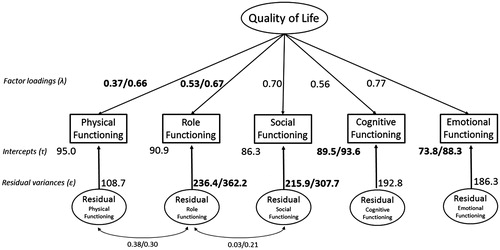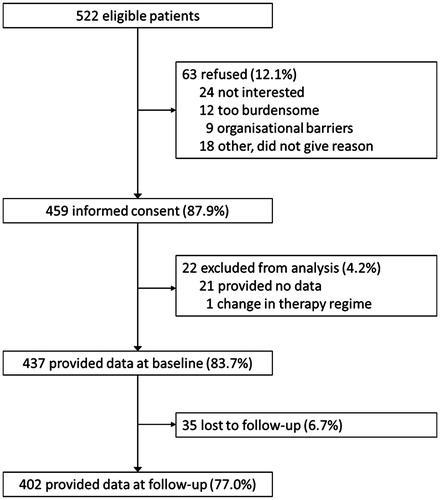Figures & data
Table 1. Descriptive statistics of the sample.
Table 2. Change of observed EORTC QLQ-C30 functioning subscale scores from baseline to 3-months follow-up.
Figure 2. Structural equation model, with the EORTC QLQ-C30 subscales indicating the latent variable quality of life. Note. Rectangles represent observed variables, circles latent variables, single-headed arrows the impact of one variable on another, and double-headed arrows the covariance between pairs of variables, respectively. The numbers are the parameter estimates of the resulting response shift model: (standardized) factor loadings (λ), (unstandardized) intercepts (τ), residual variances (ɛ) and residual correlations. Parameter estimates separated by a slash represent separate baseline and follow-up assessment estimates; otherwise, unstandardized parameters were constrained to be equal across assessments. Bold numbers indicate response shift. λ indicates factor loadings, τ intercepts, and ɛ residual variances, respectively. CF, Cognitive Functioning subscale; EF, Emotional Functioning subscale; EORTC, European Organization for Research and Treatment of Cancer; PF, Physical Functioning subscale; QoL, quality of life; RF, Role Functioning subscale; SF, Social Functioning subscale.

Table 3. Zero-order correlations of the model variables.

